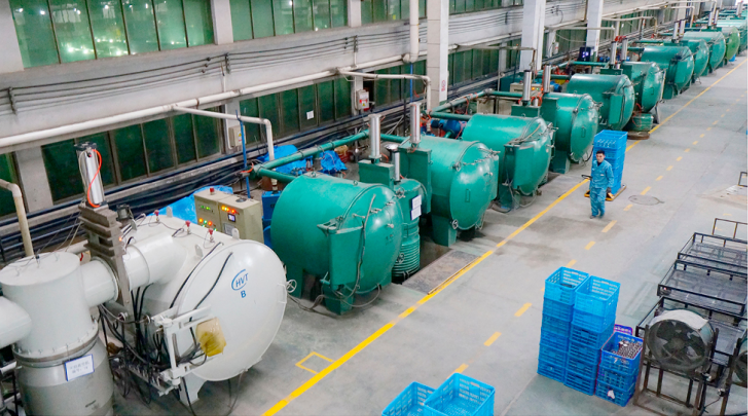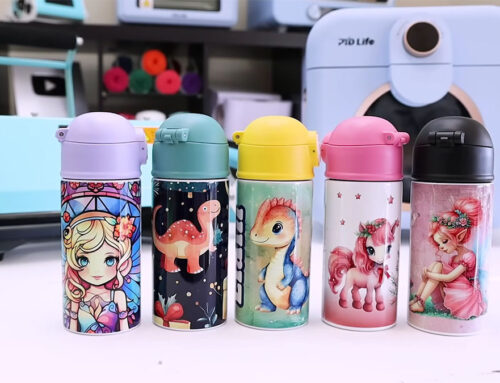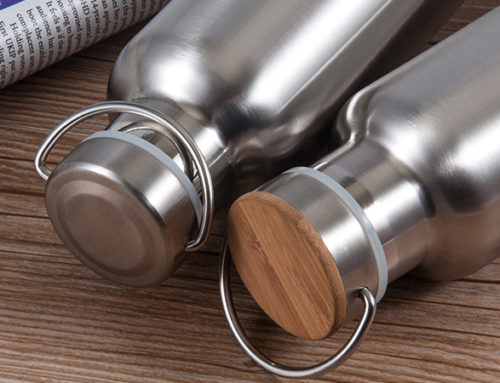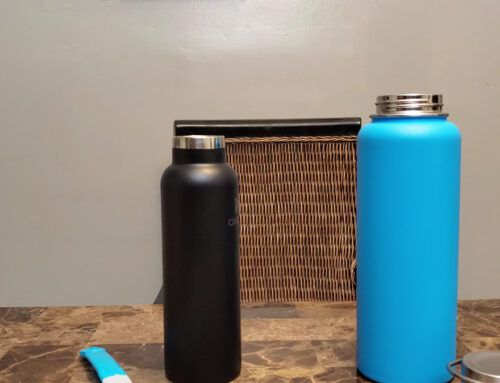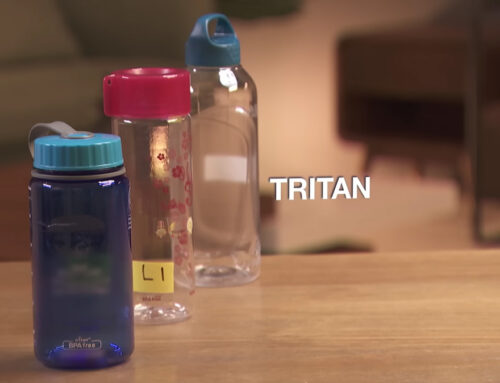1. Foreword
As an independent discipline, vacuum technology started at the end of the 19th century and the beginning of the 20th century. In the middle of the 20th century, the demand for vacuum conditions in electronics, atomic energy and aerospace technology has driven the progress of vacuum technology.
The traditional vacuum technology mainly includes the acquisition of vacuum, the detection of vacuum and the configuration of vacuum systems. Vacuum technology has become both a condition and a means of innovation in many disciplines.
However, the interpenetration of modern science and technology has greatly enriched the connotation of vacuum technology. In particular, the emergence of ultra-high vacuum and ultra-clean surfaces has unveiled many new phenomena and laws in nature (nanotechnology is a good case in point).
According to IUVSTA, the subdisciplines of modern vacuum technology include: classical vacuum technology (vacuum acquisition, detection, systems and their conventional applications), vacuum metallurgy and surface engineering, plasma science and technology, thin films, electronic materials and processing technologies, surface science, applied surface science and nanoscience and technology.
Therefore, vacuum technology is not only needed for many modern technologies, but is also a very vital physical category in deeper physics research.
2. Historical Review of Classical Vacuum Technology and Its Applications
2.1 What Is Vacuum
First, the so-called vacuum refers to the one in physics. It is a physical space where there are no gas molecules or atoms, but have various energy particles. Second, vacuum can also refer to the one discussed in applied physics and technology. In this case, vacuum refers to the region with a gaseous pressure much less than atmospheric pressure. The word vacuum stems from the Latin adjective “vacuus” for “vacant” or “void”.
There is a vacuum of natural state on earth. The atmosphere surrounding the earth is subject to gravity (the gravity of air molecules), and the higher it is from the ground, the thinner the air is.
Normally, the physical measure of the density of a gas is pressure. Because gas molecules are in irregular thermal motion and generate pressure when they collide with objects, the higher the density of gas molecules, the higher the pressure of the gas.
At the sea level, the pressure generated by the gas is 101325Pa (about 105Pa), and this value is called the standard atmospheric pressure. However, the atmospheric pressure at the top of Mount Everest is only 32,000 Pa, one-third of the pressure at the sea level.
Atmospheric pressure decreases with increasing height above the earth, basically in line with the exponential law. Atmospheric pressure drops to one tenth of the standard atmospheric pressure at an altitude of 18 km, and drops to only one millionth of the standard atmospheric pressure at an altitude of 96 km. The cosmic vacuum outside the Earth’s atmosphere is called space vacuum, which is a typical natural vacuum.
People force their lungs to breathe through the contraction and relaxation of the diaphragm between the thoracic and abdominal cavities. The pressure in the thoracic cavity is close to atmospheric pressure when inhaling, and can drop below atmospheric pressure when exhaling, hence the appearance of an artificial vacuum.
Scientists and researchers further use technology to invent various vacuum pumps to pump out the gas in sealed containers to obtain artificial vacuum, which has helped to gradually form the discipline of vacuum technology. However, even the lowest pressure obtained by using modern exhaust methods can only reach 10-12~10-13Pa. It is still far from absolute vacuum.
2.2 The Development of Vacuum Technology in History
The earliest acquisition and application of vacuum can be traced back to the sixth century BC, when Chinese iron-making technology was quite advanced and iron furnaces were equipped with blasting equipment in order to melt iron. The first blasting ones were called “leather bag” blower and “wind box” blower.
The working process of the wind box includes: negative pressure suction and pressurized exhaust. The principle of working is basically the same as that of the present reciprocating piston vacuum pump. Such wind boxes became an important tool for iron making in 1367 AD. And this is the earliest example of vacuum acquisition and application.
A more typical example is the cupping therapy of traditional Chinese medicine. It has been used in China for 2,000 years as a tool for healing. Cupping therapy masters the physical phenomena of air expansion and contraction and steam condensation to create a vacuum inside the cup.
It is the Europeans who have the exact historical record of obtaining the vacuum. In 1643, an Italian Evangelista Torricelli made an experiment on atmospheric pressure.
He used a long, thin glass tube closed at one end and a small trough of mercury. First he filled the open end of the glass tube with mercury until it filled the entire tube and then pressed the opening and turned the glass tube upside down in the mercury trough. After that, he opened the pressed opening and the height of the mercury in the glass tube gradually declined until it fell to 760 mm above the liquid level of the small trough, the mercury in it stopped.
He believed that there was a “vacuum” in the upper end of the glass tube. Subsequently, his student Pascal and others carried out the experiment on the mountain and the result was that the mercury was below 760 mm, proving that the atmospheric pressure was related to the height.
In 1654, German physicist Guericke successfully invented a piston vacuum pump. In order to prove the enormous strength of atmospheric pressure, he once performed an experiment in public.
He used two hemispheres with a diameter of 119 cm and rejoined them together. Then Guericke used a vacuum pump to remove the air inside the ball, which meant there would be a large lateral force of atmospheric pressure on the ball. It took eight horses to pull each hemisphere in the opposite direction! And because the experiment was finished in Germany’s Magdeburg, it is now known as the famous Magdeburg hemisphere experiment.
British scientist Robert Boyle who discovered Boyle’s Law in 1662 and Swiss scientist Bernoulli who proposed Kinetic Theory of Gases together laid the first physical foundations of vacuum technology.
From the year 1643 when Evangelista Torricelli achieved “vacuum” to the year 1879 when Thomas Edison invented carbon filament electric bulb, this time span of more than 200 years have saw a long process of development of vacuum technology. And this process also promoted the birth and development of electronics.
The so-called vacuum electronic devices is the one with an internal space of vacuum. Vacuum technology has paved the way for the advancement of electronics. At the beginning of the 20th century, the development of electronics technology in turn sped up development of vacuum technology.
In 1905, German scientist Peter Gade devised the mechanical pump, and in 1906, Pirani invented the thermal resistance vacuum gauge. Later, Gade invented the molecular pump and the diffusion pump in 1913 and 1915 respectively. And Beckley created the hot cathode ionization gauge in 1916.
Vacuum technology developed rapidly from low vacuum to high vacuum, and the advancing momentum of high vacuum technology continued until the World War II. In particular, Hickman’s invention of the oil diffusion pump in 1936 and Penning’s invention of the cold cathode ionization gauge in 1937 have basically matured the high vacuum technology in terms of its acquisition and measurement. Currently, these inventions are still applied to most vacuum systems.
After the year 1940, vacuum technology was widely used in atomic energy and even expanded to fields such as vacuum metallurgy, coating, freezing and drying. By 1950, the vacuum range was correct to 10-4 to 10-5Pa. What’s more, higher vacuum was also reached in some laboratories, but the specific figure could not be measured yet.
In 1950, Bayard Alpert successfully invented the B A gauge, providing conditions to measure ultra-high vacuum. In 1953, the creation of getter pump made it possible for people to acquire clean ultra-high vacuum.
During the two decades from the 1950s to the 1970s, vacuum technology was integrated into many cutting-edge scientific technologies and achieved rapid development. Technologies like Electronuclear machine, plasma nuclear fusion devices, microelectronics large scale integrated circuits and especially aerospace technology have led to new leaps in vacuum technology.
Vacuum technology steps into a new era of “super clean” (adopt vacuum technology to clean objects) and the pressure range of it has been decreased from 10-4 to 10-5Pa to 10-12 to 10-13Pa. The vacuum monolith has increased seven or eight orders of magnitude, the vacuum system volume has increased to tens of thousands of cubic meters, and the pumping speed of the cryogenic pump can be as high as 107 l/s.
Today’s vacuum technology can obtain and measure pressures ranging from atmospheric pressure 105Pa to 10-13Pa with the pressure range of 18 orders of magnitude. Along with the extension of certain new applications, we are increasingly approaching the so-called “ideal vacuum”.
3. Practical Vacuum Technology and Its Applications
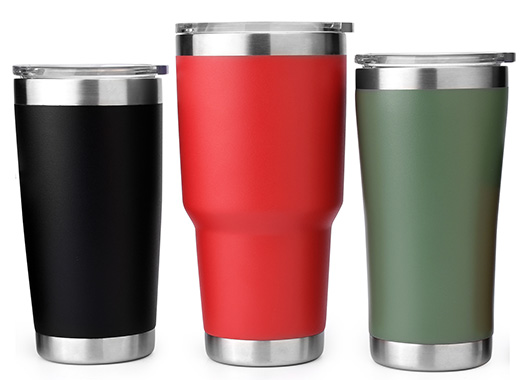
Practical vacuum technology mainly includes vacuum acquisition technology, measurement and leak detection technology, and the design and calculation of vacuum systems and components. The early advancement of vacuum technology mainly focused on these aspects.
Currently, the commonly-used vacuum obtaining devices are mechanical pumps of various types such as rotary vane pump, fixed vane pump, slide valve pump, Roots reciprocating pump, various dry mechanical vacuum pumps, diffusion pump, absorption pump of molecular sieve, sublimation pump, sputtering ion pump, turbo molecular pump and cryogenic pump. These pumps of different types obtain vacuum by exhausting or adsorbing gas with their own principle.
At present, the practical vacuum gauges for measuring the degree of vacuum are U-type vacuum gauge, compression vacuum gauge, thermal conductivity vacuum gauge, hot cathode ionization vacuum gauge and cold cathode ionization vacuum gauge. These gauges measure the vacuum degree adopting different principles. Vacuum gauges are also needed to be calibrated in advance if the degree is obtained indirectly by other physical measurements.
There are various types of mass spectrometers for measuring the partial pressure of gases. In order to obtain the required vacuum in a sealed vessel, it is also a must to deal with leakages, hence the invention of leak detection methods and tools such as helium mass spectrometry leak detectors.
During the process of increasing the vacuum degree of the vessel, it is vital to remove the gases of the vessel walls and internal workpieces, which may often become the major factor that obstacles the realization of high vacuum. Therefore, these materials are often degased through baking at high temperatures.
The study of diffusive escape of gas molecules or atoms in solid materials and surface desorption and adsorption processes has become a significant task for further vacuum improvement.
After the technical acquisition of a vacuum environment, there will be new phenomena that are not available in the original atmosphere and that can be studied and exploited by people.
3.1 Formation of Differential Pressure Can Work
In daily life, there are many situations where the pressure imbalance between two sides is exploited. The pressure difference or attraction caused by atmospheric pressure on one side and vacuum phenomenon on the other side is an enormous energy. Technologies such as vacuum conveying, forming, filtering, attraction, impregnation are widely adopted in many sectors like textile, food processing, electricity, casting and so on.
3.2 Improvement of Thermoelectric Insulation Performance
In the vacuum environment, the gas molecules are thinner, and the effect of conduction of electricity and heat is thus weakened. The vacuum adiabatic sandwich is used for vacuum insulated stainless steel water bottles, tumblers, cups, food containers, can coolers, pet bowls, thermal sealed lunch box, thermos drinkware, metal vessels, Dewar bottles and so on. The vacuum switch of high-power electrical equipment features advantages of easy to extinguish the arc and stability of working.
Vacuum insulation sandwich is widely adopted in the medical industry this year. Thanks to vacuum insulation technology, the low temperature environment needed for medical treatment can be realized and preserved for a long time, and high temperature as well as high pressure in some cases can be insulated.
Vacuum insulation technology has also been applied to the electrical and electronics industry. For example, in recent years, KingStar cooperated with the world’s top 500 companies Dyson and together developed a vacuum insulation components so that the heat flow of the hair dryer would not affect the core electronic components inside the dryer, offering great help to protect the electronic components, extend the product life, and improve the stability of such products.
3.3 Extending of the Particle Flight Path
The average speed of thermal motion of a typical gas molecule is about 500 m/s, slightly faster than the speed of sound. In the vacuum environment, the average free range of gas molecules becomes longer. For example, the average free range can reach more than 50 km at a pressure of 10-7Pa.
One of the reasons why vacuum is required for television tubes and computer monitors is that the electron beam aiming for imaging has to avoid collision with gas molecules and thus avoid dissipating heat. Electronuclear machine needs vacuum environment because the accelerated particles never lose energy or scatter away due to collisions.
3.4 Removal of Surrounding Gas Barriers
In the atmosphere, objects are surrounded by a dense layer of gas. For instance, when drying clothes in the atmosphere, the moisture does not evaporate easily and any liquid evaporation can not evade this same problem: the denser the surrounding gas, the slower they evaporate. This is because the evaporation speed is limited by the diffusion rate of liquid vapors in the surrounding gas.
After the appearance of vacuum environment around the liquid, the evaporation rate is greatly accelerated and the boiling point is reduced accordingly. For example, the boiling point of water on the top of Mount Everest is only 70 degrees Celsius. Vacuum concentration of food and biological products, vacuum freezing and drying, and oil distillation under reduced pressure are all products of adopting this principle to remove the surrounding gas barriers.
3.5 Reduction of Harmful Gas Effect
In a gaseous environment, the interaction between gases and objects occurs microscopically through the continuous collision of gas molecules on the surface of the object. Electric light bulbs, electronic tubes and various electric vacuum devices all need the scorching tungsten filament.
The tungsten filament has the duty of emitting electrons and must be electrically heated to a temperature of over a thousand degrees. However, the tungsten filament will immediately oxidize and burn itself under such high temperatures if there exists no vacuum environment. The same is true for some reactive metals that need to be smelted in a vacuum.
The preservation of food by vacuum packaging also offers a good atmosphere for the storage of food and serves to reduce the effect of harmful gases.
3.6 Highly Clean Surface of Objects
According to calculations, there are about 105 molecules per square centimeter of the surface of an object that can be covered with a layer. If the gas molecules touch the surface of the object and are adsorbed there, a vacuum of 10-1Pa will contaminate the entire surface of the object with gas molecules in just a few hundredths of a second, while an ultra-high vacuum of 10-6Pa will take a few minutes.
Only in ultra-high vacuum environment can the absolute cleanness of the surface of the object be guaranteed. Vacuum unveils the original surface of an object, which is what surface science studies.
4. Recent Development of Vacuum Technology
As mentioned above, the classical (traditional) vacuum technology includes mainly vacuum acquisition, detection and development of vacuum systems itself and has become the condition and means to cooperate with many disciplines in terms of innovations.
However, the connotation of vacuum technology has been greatly enriched by the intersection and penetration of modern technologies, especially the emergence of ultra-high vacuum and ultra-clean surfaces, which explain many novel phenomena and laws in nature.
4.1 Vacuum Applications in Aerospace Technology
Aerospace is one of the main aspects of vacuum technology applications, featuring the highest vacuum level, the largest pumping capacity and the largest vessel being pumped. It is based on the environmental simulation of outer space and interstellar voyages. The vehicle enters into the outer space and thereby loses the protection of the atmosphere, directly exposed to electromagnetic radiation from the sun, bombardment by charged particles, meteorites and cosmic dust Therefore, the simulation experiments are needed to deal with these potential problems.
Artificial satellites, space shuttles, manned spacecraft and space stations are commonly known as spacecraft. Different spacecraft orbit at different altitudes because of their own distinctive missions. After the spacecraft lifts off with the launch vehicle, the first thing that they encounter is the vacuum environment of space, which is different from that of the ground.
In the near-Earth orbit from 200 to 500 km above the ground, the space vacuum is 10-4 to 10-6Pa, in the medium orbit from 1000 to 10000 km, about 10-8 to 20-11Pa, and in the high space, about 10-13 to 10-14Pa.
In the infinite cosmic space, the gas molecules emitted from the spacecraft and thermal radiation are not reflected back to the spacecraft and are absorbed by the infinite universe. These phenomena are called molecular sink and heat sink respectively. Therefore, the cosmic space can be regarded as an ideal black body, a cold and black space. We call this background environment “a cold and black environment”.
Space vacuum, cold and black environment of the space and solar magnetic radiation environment are the elemental environment of spaceflight. In addition, space is also filled with various other forms of matters, such as gravitational fields, magnetic fields, gas ions, plasma, charged particles of energies and micrometeorites. These matters feature natural presence and is thus known as the natural environment.
Spacecraft are complex systems, generally consisting of power, propulsion, payload, communications, thermal control, telemetry and remote control, attitude measurement and control. Will they work regularly in orbit? What effects do various orbital environments have on spacecraft? How can spacecraft be protected? What is the quality of the spacecraft’s assembly process?
All these questions need to be and must be answered though experiments. That’s why the creation of a simulated spatial environment to test their performance on the ground is needed. This is the space environment simulation test and vacuum technology lies on the basis of space environment simulation technology.
Thermal vacuum environment simulation equipment is used for the whole star (ship) test, subsystem test, and component test respectively. It simulates three basic environments, namely, high vacuum in space, cold and black background and solar electromagnetic radiation. This equipment is the most basic one for space simulation.
In addition, there are ultra-high and ultimate-high vacuum environment simulation equipment for experiments on lubrication, friction and cold welding problems of moving parts exposed to ultra-high vacuum or ultimate-high vacuum in space off-planet. These equipment is used to find out the countermeasures for protection and to protect the normal operation of the satellite.
Besides, there are also rocket engine start and plume test, spacecraft simulation module, and some other space environment simulation equipment that requires the adoption of vacuum technology. In short, all these special equipment for aerospace exploration need indispensable vacuum technology.
4.2 Vacuum Applications in A Certain Ionophore Technology
99.9% of the matter in the universe is in clusters of stars in some certain ionic state, and between the clusters, there is a vast vacuum. But the natural matter usually seen on Earth is always in the state of solid, liquid or gas. Only in the thin atmosphere of the upper high altitudes there exists plasma produced by the photoionization.
It is now easy to acquire the low-density thin gas state in a specific container and then obtain a certain ionophore state by means of discharging with the advancement of electric vacuum technology.
The study of flash discharges in a mixture of argon, water gas, methane and ammonia to produce various amino acids and nucleic acid salts is enlightening us that the earliest life on Earth may have been born in a plasma.
In the 21st century, nuclear fusion power plants provide inexhaustible new sources of clean energy for people, and plasma technology based on vacuum technology will play an increasingly vital role in people’s lives and in the progressing of science and technology. The construction and operation of large fusion devices has greatly promoted the development of high technology in industries.
The vacuum chamber is used to contain the high temperature plasma for a long time. The leakage rate of the vacuum chamber, which has to meet the requirements both at room temperature and at 500°C, reaches a very small permeation rate that will take more than 3000 years to penetrate 1 liter of gas in the vacuum chamber. This is such a small leakage rate that has never been achieved before!
4.3 Nanotechnology & Vacuum
Nano was originally a unit of length, namely, 10-9Pa meters. The object of nanotechnology research is the nature and application of substances with dimensions in the range of 0.1-100nm, and is thus called nanotechnology. Nanotechnology is the modern development of vacuum technology and its latest field involved.
Many experts now reach an agreement that the following realms will benefit from the advancement of nanotechnology.
①Electronics and Communication ②Nanomedicine ③Chemistry and Materials ④Energy ⑤Manufacturing Industry ⑥Aircraft and Automobile ⑦Space ⑧Environmental Protection.
Because of its extensive utility, some researchers and experts hold a belief that nanotechnology seems to produce breakthroughs in many fields in the future. As we enter the 21st century, nanotechnology will have a major impact on the health, wealth and security of people around the world, at least as much as antibiotics, integrated circuits and synthetic polymers did in the 20th century.
Nanotechnology saw its mature in the early 1990s with the following disciplines: nanochemistry, nanophysics, nanobiology, nanoelectronics, nanomechanics, nanofabrication and process science, and nanoscale characterization and measurement. As a comprehensive discipline, the science of nanomaterials includes the above three disciplines.
4.4 Surface Science & Vacuum
What we see as the surface of a solid is actually covered with a thick layer of gas. It is impossible to obtain a truly clean and real solid surface in an atmospheric environment.
The development of vacuum technology has created the indispensable conditions for surface science research and the increasingly clean surfaces can be obtained with its further development. Surface science cannot be separated from vacuum technology and has become an important part of vacuum technology.
The 20th century was a glorious century for the development of human science and technology, with a series of major discoveries and inventions that had a great impact on human progress and civilization. The 21st century will, with the further progress of science and technology, see even greater advancement of vacuum technology, its applications and its better contributions to human beings.
As a leading vacuum insulated metal container manufacturer, KingStar’s R&D department has been, in recent years, actively cooperating with universities and research institutes to apply the cutting-edge technology of vacuum insulation to the manufacturing of stainless steel insulated bottles. KingStar adopts advanced technology to realize the company’s vision: Technology Makes Life Better.

